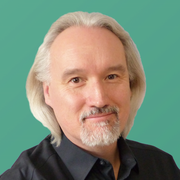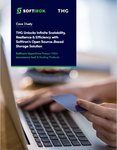We’re reaching a tipping point in data center design, fuelled by the dramatic growth in demand for scalability and performance in compute and storage. However, coupled with tighter, seemingly competing efficiency objectives, it seems inevitable that a more holistic view must be taken in the quest to re-engineer the data center of the future.
To date, what is housed in the racks has been largely immune to scrutiny as Ops teams battle to deliver service to the increasingly power hungry IT infrastructure. But what if, instead, that hardware could become the cornerstone of a sustainability strategy? What could we achieve together if we took a long hard look at what is actually in the racks? How would that affect our outcomes? Could we be more sustainable and still achieve cutting-edge performance?
We believe so.
The four fundamental truths of data center design
No matter which part of the supply chain you contribute to or participate in when it comes to building and operating a data center, it seems to me that there are four fundamental truths that can’t be ignored if we want to continue to serve future data demands in anything like an efficient manner.
Truth One – Data is growing exponentially, data centers are not.
Pick a report - any report - and they will all tell a similar story: the amount of data that we are creating, and the number of people and devices that want to access it is growing exponentially. For example, IDC predicts a 61 percent compound annual growth rate of data, being accessed by an additional one billion people (bringing the total to six billion) by 2025. Total data in 2025? 175 zettabytes – or 175 trillion gigabytes, if that makes it easier. Either way you slice it, we can agree that it’s a lot.
Yes, incremental advances in storage media will enable us to pack more storage into the same units of rack space, but it’s not going to be enough, not by a long shot. Current course and speed will require hectares more data center real estate with corresponding additional demands in power and cooling. Not particularly sustainable!
See our case study about how Sausage Cloud, an IaaS cloud services provider, engaged with SoftIron to improve the density of their racks in a very unique location with a limited power supply.
Truth Two – Traditional data center appliances are power hungry and hot
Let’s assume for the moment that can make some sustainability gains by increases in storage capacity. We’re still going to have to supply power to these data centers, and supply enough power to support these ultra-loaded racks. While significant improvements have been made in power efficiency in data centers over the years, that’s still a very big ask.
Now, that additional heat is a problem, because there will be a lot of it. In fact, around 30 percent of the total power consumed in a data center goes to cooling alone. It's a rare occasion when highly optimized data centers can be found in the enterprise. They seem reserved for the public cloud vendors and monoliths, such as YouTube. It’s probably also fair to assume that in the race to the cloud over the years, investment in enterprise-class data center infrastructure has probably stalled in many businesses.
While part of the solution, addressing climate change won’t be achieved by simply using carbon offset schemes or renewable energy contracts to assuage our increased power demands. We need to fundamentally use less power if our data center architecture is going to make less of an impact on the environment and a positive impact on our CSR strategy.
See our case study about THG, one of the world’s largest ecommerce platforms, and how they engaged with SoftIron’s HyperDrive storage appliance to help address their CarbonNeutral objectives.
Truth Three – The shift from the core to the edge, and back again
Today, especially after the effect of Covid, we’re witnessing a shift of data from the core to the edge of the network. While data is still growing in the core, it’s that growth at the edge that makes truths one and two above even more critical. If I move my data to the edge of my network it’s likely I’m also moving to locations nearer where my employees operate, perhaps within cities, suburbs and other densely populated areas - places where data centers haven’t traditionally been before. It’s no secret that space in these areas will come at a premium, and there’s even less chance that those environments can be reverse-engineered, or optimized for the requirements of power efficiency and/or cooling. However in the spirit of “reduce, reuse, recycle”, if we successfully find ways to reuse existing locations and infrastructure without major refit or construction this can assist in significantly reducing the environmental impact of a shift to the “edge”.
See how a large, US Aviation & Defense organisation chose Softiron’s Ceph appliance to capture flight data at the edge for quick processing, in geographically dispersed data centers
Truth Four – A return of data to the enterprise
The reasons for the rise of hybrid-cloud environments is well known and understood. We’ve also seen an increase among our customers in the trend of repatriating data out of the public cloud and back on premises. This trend is being driven either by the desire to apply better security controls over sensitive data by keeping it “local”, to solve latency issues for regularly accessed data to enhance performance and accessibility, or a combination of the two.
The big public cloud vendors like AWS, for example, have jumped on these issues and are trying to stem the tide with solutions like Outposts, but does that really solve the issue of data security? And what about the challenge of still being locked into a proprietary architecture?
How does SoftIron help?
These “fundamental truths” have been driving strategy at SoftIron since our inception. They represent a number of the reasons we believe that “task specific” design is so important, and a design that is built upon a foundation of secure provenance. While this approach addresses plenty of other evolving demands in the data center, efficiency and sustainability are certainly core to our design principles.
By designing and building task specific appliances from the ground up that are both high performance and ultra efficient, we can simultaneously reduce the power requirement and reduce the need for cooling. (It’s in these types of scenarios the notion of PUE doesn’t do the solution justice - but that’s another whole article entirely!) The consequence of which is that we can pack more petabytes of storage into every rack, and still be well within the power and cooling budget available. We can free up square footage in data centers making them more efficient, and we can make edge deployments possible in environments that might have been troublesome before without a major refit.
By designing and building from the ground up, rather than using generic, inefficient sub-assemblies sourced from across the globe as other vendors do, we are also able to provide a transparent, auditable platform on which to build a truly secure as well as sustainable data center environment.
And lastly, by taking leading open source platforms, but “wrapping” them in task specific hardware we can both eliminate the complexities of using these platforms in the enterprise, while at the same time eliminating vendor lock-in. What’s not to love?
Find out more, or take a deep dive with us on how we can help in your data center by contacting us at [email protected]





